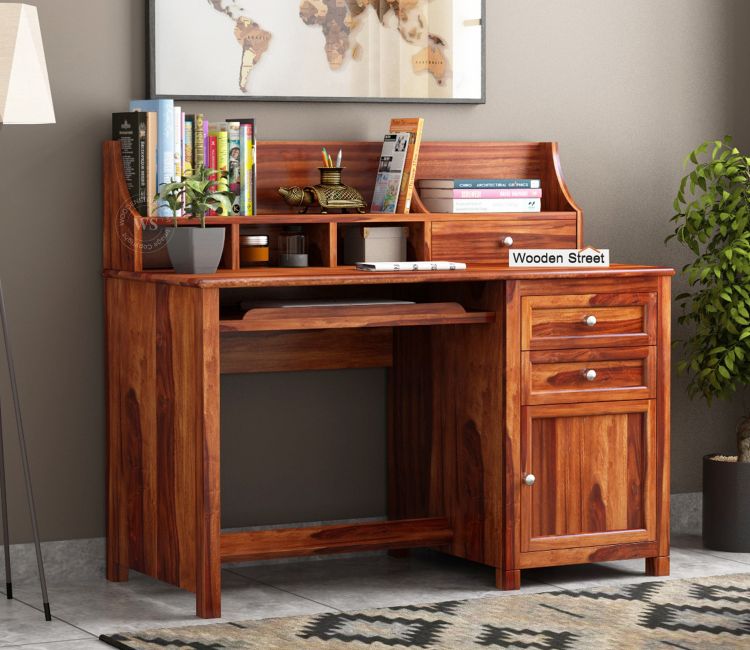Creating the right study environment is crucial for a student’s success, and it begins with a suitable study table. As education becomes more digital and academic workloads increase, students often spend long hours seated at their desks. This makes the choice of furniture especially important. A well-designed study table for students not only encourages productivity but also plays a key role in supporting posture and mental focus. With growing awareness about physical wellness, the need for ergonomic furniture has taken center stage, particularly in the context of young learners.
The Connection Between Posture and Productivity
Posture is often overlooked in academic spaces, but it has a direct impact on a student’s ability to concentrate and perform. Slouching, leaning too far forward, or sitting in an awkward position can lead to physical discomfort, fatigue, and even long-term health issues. When students are uncomfortable, their focus tends to drift, and their ability to retain information decreases.
A study table for students that is designed to support an upright and natural sitting posture allows them to remain attentive for longer periods. The right desk height, legroom, and surface area all contribute to maintaining proper alignment of the spine and reducing strain on the neck, back, and shoulders. When posture is taken care of, the mind is freer to focus on learning tasks.
Importance of Desk Height and Ergonomics
One of the most important features of a study table for students is the height. An ideal table height allows the arms to rest comfortably at a 90-degree angle when writing or typing. If the table is too high or too low, students might hunch or stretch uncomfortably, both of which can negatively affect posture. An ergonomic table ensures that the chair and table height complement each other, which is essential for maintaining healthy sitting habits.
In addition to height, a spacious work surface is important for arranging books, laptops, notebooks, and study materials in an organized manner. Cluttered desks not only cause distraction but also make it harder for students to stay seated in a consistent, healthy posture. A clean, organized table contributes to a calm mindset, allowing better retention and learning efficiency.
The Role of Lighting and Desk Placement
While the design of the study table plays a major role, its placement and surroundings also affect posture and focus. Positioning the table near a window where natural light enters can help reduce eye strain, making it easier for students to sit comfortably for long periods. Natural light enhances mood and keeps the space vibrant, encouraging productivity.
If natural light is limited, having a dedicated table lamp can be a great addition. A study table for students should ideally be placed in a quiet and distraction-free corner of the house. This positioning not only improves mental clarity but also reduces the tendency to move or shift frequently, which often leads to poor posture.
Storage Solutions That Improve Posture
Having to frequently bend or reach for items placed elsewhere can disrupt a student’s sitting position. A study table for students with in-built storage options can be a game changer. Drawers, shelves, and compartments allow essential items to be kept within arm’s reach, reducing unnecessary movements and helping maintain a consistent posture.
With the right storage solutions integrated into the table, students do not have to get up often or twist their bodies awkwardly to access materials. This balance of convenience and function helps maintain the correct alignment of the body and keeps the focus uninterrupted.
Encouraging Healthy Study Habits
A good study table does more than just hold books and laptops. It encourages discipline, routine, and structured study habits. When students have a designated and comfortable space to study, they are more likely to follow a regular schedule. A study table for students that promotes both mental focus and physical well-being acts as a motivating factor, making learning more effective and less tiring.
Parents and guardians should observe their child’s comfort level while using the table and make necessary adjustments to improve ergonomics. Providing footrests or adjustable chairs, along with a supportive desk, can make a significant difference in the long run.
Long-Term Benefits of the Right Study Table
Choosing a proper study table for students is not just about aesthetics or storage. It is about investing in their overall health and academic development. A table that supports good posture reduces the risk of chronic pain and discomfort, making it easier for students to stay engaged in their studies.
Moreover, a dedicated study area signals to the brain that it is time to focus. This psychological connection helps build discipline and minimizes distractions, making learning more enjoyable and effective. The right study table can therefore lead to improved academic performance, better time management, and a healthier lifestyle.
In conclusion, the study table for students should be thoughtfully selected with a focus on comfort, posture, and usability. When all these factors come together, students not only benefit academically but also grow into adults who understand the value of wellness and efficiency in their working environments.



